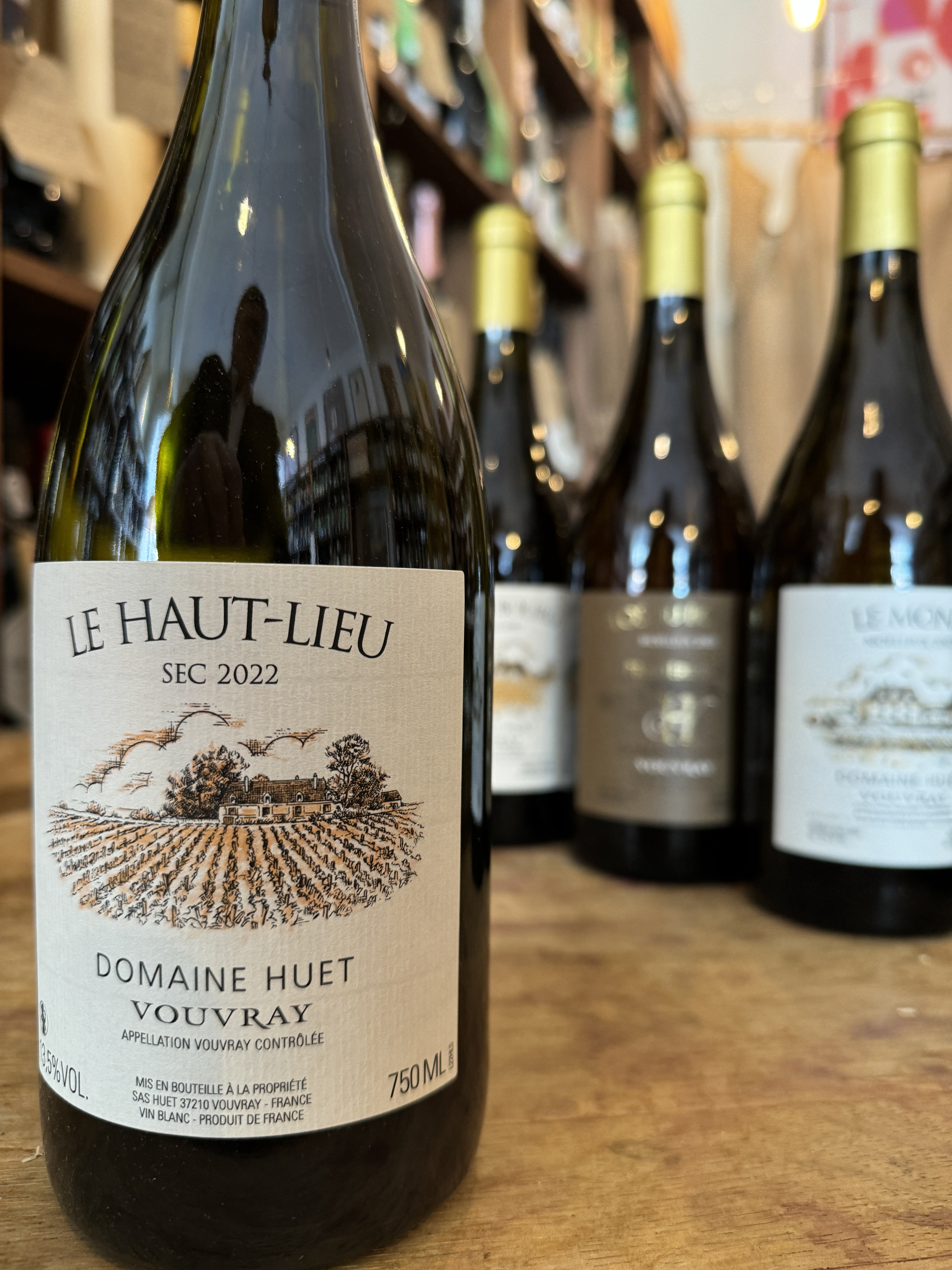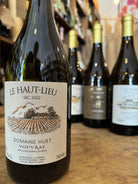Domaine Huet Le Haut Lieu Sec Vouvray 2022 75cl
Tasting Note
Ripe pears, with hints of tangerine and then a dry, fresh palate.
About the Le Haut Lieu
The late 16th Century closerie of Le Haut Lieu is situated at the top of the rue de la Croix-Buisée, with the vineyards sitting at the summit, off to the right. In the introduction to his 1823 novel Quentin Durward, Sir Walter Scott mentions time spent at the ‘chateau of Hautlieu’ on the banks of the Loire, although reading through the work, it becomes evident that it is unlikely to have been the same place, unless Scott has used some artistic license in embellishing the standing of the Marquis of Hautlieu and his chateau.
From the initial three hectares of vineyards that were purchased by Victor Huet, Le Haut Lieu has since been extended to nine hectares. As the name suggests, the house and the vineyards are situated on a plateau with a slight south facing gradient at one of the highest points of the appellation.
The Le Haut Lieu itself consists of 3 to 4 metres of heavy clay soil mixed with chalk, known locally as aubuis, which lies over a bed of limestone. It is this limestone subsoil that proves to be the constant link between the three vineyards owned by Huet. It is the vines proximity to the porous, yellow tuffeau that is responsible for the overriding style of wines produced from each of the sites.
This friable rock is from the Turonian Age and was laid down during the Cretaceous Period, which dates them at between 67 and 137 million years. The tuffeau is made up of fragments of bryozoa, sea creatures that lived in vast numbers in tropical oceans which, when mixed with fragments of mica and grains of sand then compacted, gives notable physical and chemical properties to the soil. The chalky, brittle quality makes it ideal for excavation; and the reason why Vouvray is made up of a labyrinth of caves and troglodyte dwellings.
Of the three sites, Le Haut Lieu regardless of their style or sweetness, tends to offer the most precocious of wines, although this should be seen as a relative statement given that they are still capable of lasting many decades.
Producer
Gaston Huet was born in Plauzat, a village vigneron in the Auvergne on the 4h April 1910. He came from a modest family. His father, Victor, ran the village café, which is where he met and married Anna-Constance Moreaux, Gaston’s mother, in September 1908. Victor served his country in the Great War, but as a victim of mustard gas, he suffered respiratory problems and, at the advice of his doctor, he gave up the bistro in search of another career.
Victor’s own father was an Angevin, so it was decided that the family would relocate to the Val de Loire. He was considering a future in forestry when, by chance, the couple happened upon the appropriately named Le Haut Lieu, high up on the plateau above Vouvray. It was Constance who fell in love with the low manoir with its pretty shutters and its south facing views over the valley. As it was, Victor became a vigneron instead.
Gaston, now 18, was encouraged to attend college where he studied general agronomy before returning to the domaine. Between 1929 (the first Huet vintage) and 1934, the wines were made at Le Haut Lieu.
In August 1934, Gaston married Germaine Foreau, sister of André, whose family had installed themselves as vignerons in Vouvray in 1923. The couple’s first daughter, Jacqueline was born in 1938. That same year, Gaston was destined to take over the running of the domaine from his father, although with an impending war, he found himself drafted into the French army as a lieutenant instead.
Before leaving for the front, Gaston ensured that wines from their first few vintages were safely secreted in cellars along the Loire. In the years that followed the war, Gaston and Germaine had two more children; a son, Jean, who duly followed his father by studying as a winemaker, and a daughter, Marie-Françoise. From the original three hectares, Le Haut Lieu grew to become nine and, in 1953, he added Le Clos du Bourg which is still considered by many to be the greatest single site within the appellation, and was followed, in 1957, by the addition of Le Mont.
In 1968 Marie-Françoise married local butcher’s son, Noël Pinguet, a beer drinker by his own admission who just happened to fall in love with the daughter of a vigneron. In the early 1970s, Noël worked alongside his father-in-law and, although having no formal winemaking training, he took over the running of the cellar from the 1976 vintage. Apart from his five years spent in a POW camp, Gaston had lived the whole of his adult life at Le Haut Lieu; right up to the time of his death in April 2002.
With no natural family successor (the Pinguet’s had two daughters but neither Anne nor Carine showed any interest in taking on the domaine), the property was offered up for sale and in 2003, Anthony Hwang, a Filipino born, New York based businessman took a controlling share.
Between 2003 and 2012 there were no real changes in the day to day running of domaine. Noël continued to tend the vines on its biodynamic principles, aided by the genial Jean-Bernard Berthomé, a local lad who had worked closely with Noël since 1978, joining directly from college.
Following the sale in 2003, Noël had a contract with Société Huet to work ‘part-time’ until his 70th birthday in 2015, although he and Hwang decided to part company in 2012. Jean-Bernard elected to retire in 2021. Today, it is Vouvrillon, Benjamin Joliveau, who officially started working at Huet in May 2009 (having just completed a stage at Hoopenburg in the Cape) who heads up the cellar and vineyard team, whilst Sarah, Anthony’s daughter, is in overall charge of domaine.
Country: France | Region: Vouvray, Loire | Alcohol: TBC | Grapes: Chenin Blanc | Organic | Biodynamic


